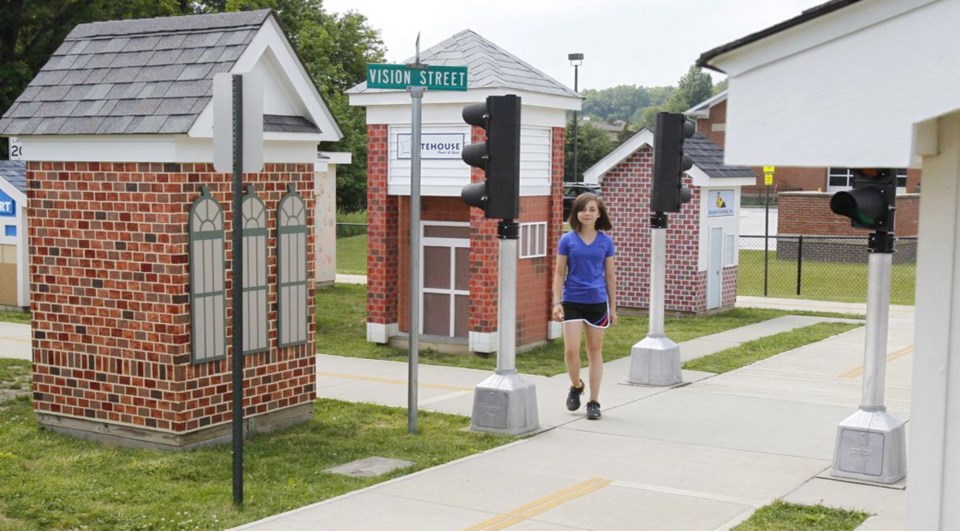AKRON, Ohio — You’re five years old, weigh about 50 pounds and have to jump to see over the hood of an SUV. It’s time to step off a curb on your way to school and it’s just a bit scary.
In this imperfect world, some children have no companion to help get them safely through the neighborhood. Parents often must be at work before school starts or must stay on the job until long after school lets out. Some families have only one parent, and sometimes there aren’t older kids to walk with a younger one. So it’s not unusual to see children walking alone to school.
Once school is out for the summer, Lisa Pardi says it’s time for the community, particularly parents, to take to the streets and get kids ready for safe trips to school in the fall.
Pardi is injury-prevention co-ordinator for the Safe Kids Coalition of Summit County, Ohio. She says parents have the first responsibility to teach kids safety concepts, but they need help. “I think it does take a community to raise children,” she said.
It’s recommended that children under 10 do not walk alone, she said — which doesn’t mean a five-year-old should be walking with another five-year-old. “We want someone who is over the age of 10 with that small person.”
When school is out, it’s a good time for parents to walk their children along the route to school, pointing out dangers and safe practices.
Pardi’s organization sponsors Walk This Way, which offers safety tips as part of International Walk to School Day, something many Victoria-area schools also mark. Unfortunately, it’s only one day in October, two months after the start of school.
Many U.S. communities also have a more comprehensive program called Safety Town, where children walk through miniature, make-believe towns with streets, sidewalks, traffic signals and vehicles.
Those tend to be in wealthier suburbs, where children seldom have to navigate busy streets.
In the absence of a Safety Town, it’s up to parents to teach their children how to walk to and from school safely, Pardi said.
One trip is not enough; families must take multiple trips for the lessons to sink in, including the dangers of school parking lots, she said. “Even though we try to teach them, sometimes they are excited and they are ready to go and have somewhere to be, and they will run out and not pay attention.”
Dorothy Chlad, Safety Town’s national president, said children must be shown safe practices repeatedly before they absorb the concepts.
That doesn’t just mean practising in Safety Towns, she said. Some communities use chalk on a playground and cardboard boxes to represent vehicles in creating a tiny town that children can walk through.



